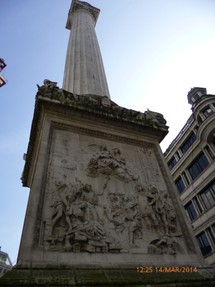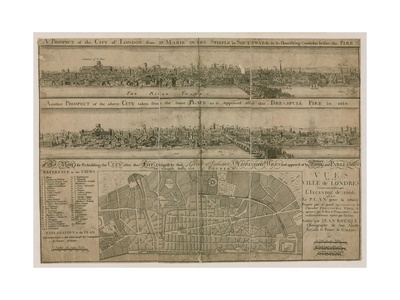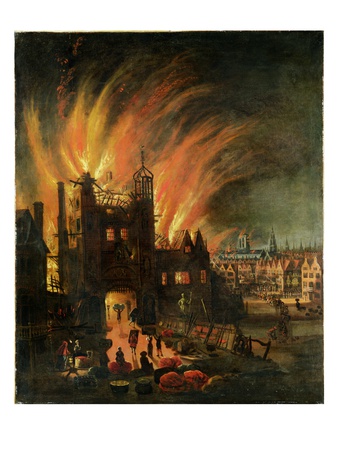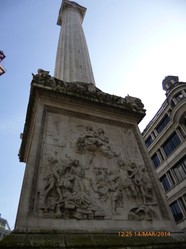A year later, the city was just recovering when - on the face of it - tragedy struck again. Thomas Farriner (sometimes spelt Farynor) had a bakery in the aptly named Pudding Lane. One of his maids is credited with failing to put out the ovens at close of business, which, in a wooden building, easily caused a fire on Sunday, 2 September 1666. The maid was one of the (alleged) five human victims of the fire as she was unable to escape the building. Most of London was made of wooden buildings, and the fire quickly spread. Nothing unusual in that, fires were commonplace in London in those days.
The Mayor of London was awoken, but he was unconcerned. I won’t repeat exactly what was reputed to have said, but it meant that he didn’t take the fire too seriously. However, by the following morning, London was burning. London Bridge was alight, and the only thing that stopped the whole bridge burning was an open space which acted as a firebreak.
King Charles II took charge, in order to try to save the city. He planned to create firebreaks by demolishing buildings in the fire’s way, although initially this failed, because the strong winds blew the flames over the gaps created. The heat from the fire melted the lead roof of the St Paul’s Cathedral that was standing at that time.
It wasn’t until Wednesday, 5 September, when with a combination of a change in the weather and a change in the fabric of the buildings, that the fire eventually started to come under control. It was finally extinguished on Thursday, having destroyed 373 acres of the city from the Tower in the east to Fleet Street in the west. 84 churches, the old St Paul’s, over 13,000 houses and 44 company halls were destroyed in the Great Fire of London.
And so, between 1671 and 1677, the Monument was built to commemorate the fire and the











 Identity Theft and How it Feelson 02/01/2015
Identity Theft and How it Feelson 02/01/2015
 Barts Hospital - a National Treasureon 01/24/2015
Barts Hospital - a National Treasureon 01/24/2015
 Urban Foxeson 01/11/2015
Urban Foxeson 01/11/2015
 How do you know which hosting platform to choose?on 01/03/2015
How do you know which hosting platform to choose?on 01/03/2015




Comments
You wil love it Mira. Thank you for your message. :-)
Wow, thank you! I'll go up there next time I visit London :)
Take oxygen Jo. I confess to not making it to the top without having to stop and pant!
I've stared up in fascination at The Monument, read all of the inscriptions and looked at the fresco, without ever once realising that you can climb the thing! How did I miss that?
I know what I'm going to be doing next time I go to London.